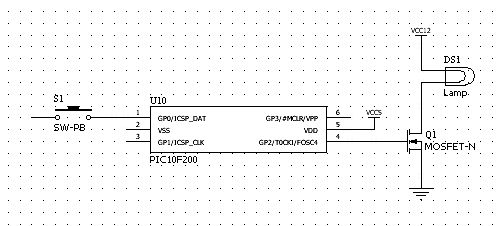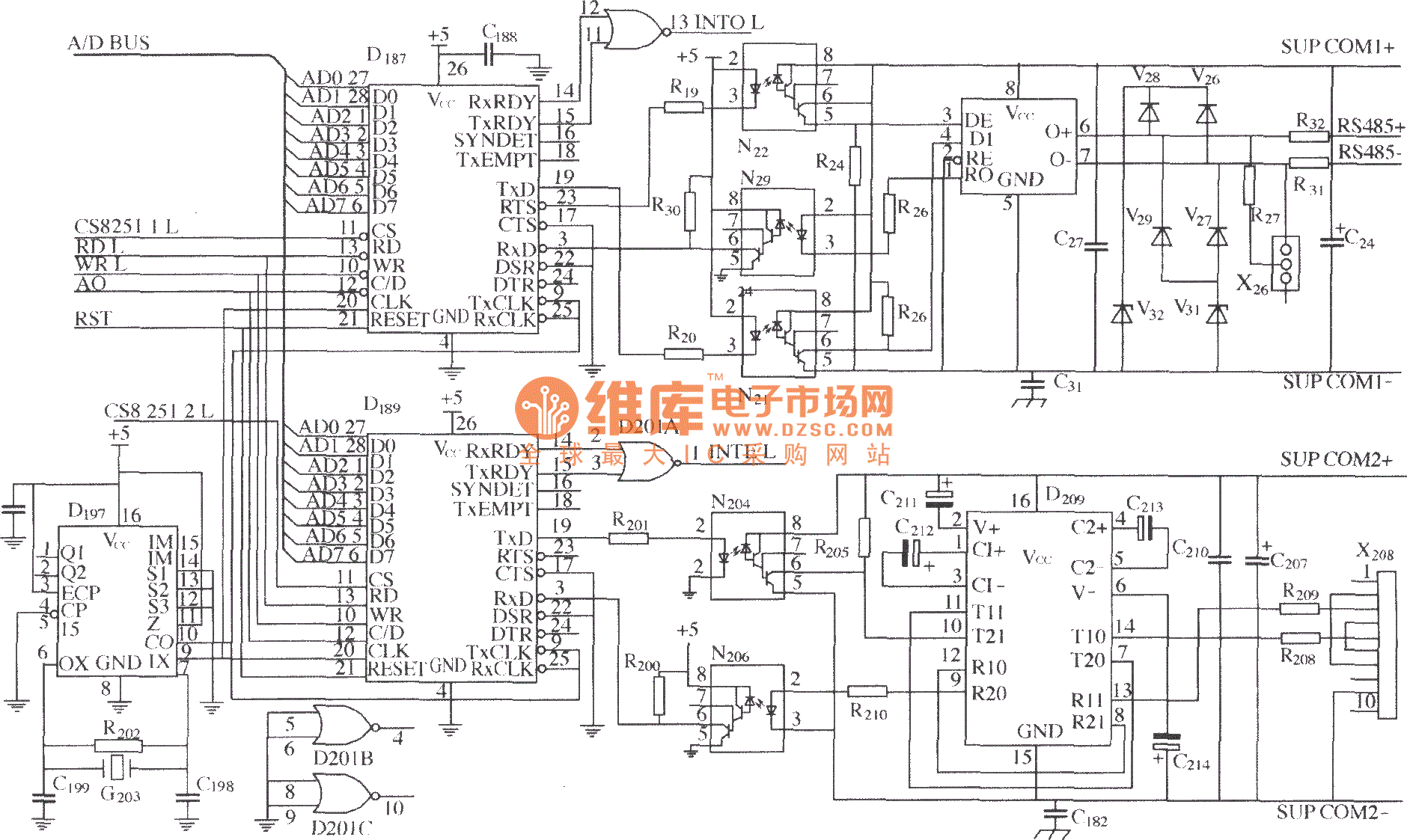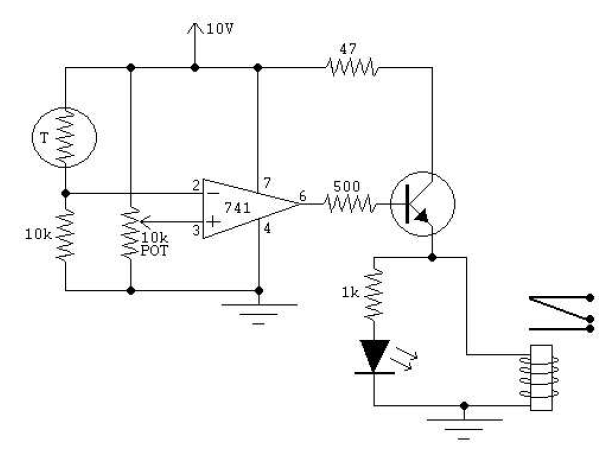
fade fade out led circuit car interior lighting

LEDs lining the headliner will fade in when the door is opened and fade out when the door is closed. The necessary components include a circuit to utilize 12V power from the vehicle to illuminate 15 LEDs and control their fading behavior. A 555 timer can be employed as a PWM driver connected to a MOSFET and a capacitor, with the load acting as the resistance component in the RC charge pump. The duty cycle of the 555 timer will control the voltage seen by the load, thus regulating the brightness through a potentiometer. The fading effect can be achieved using a 555 monostable configuration, which incorporates a capacitor between the output and the LEDs. When the door closes, a 5-second delay can be implemented before the 555 output goes low, allowing the capacitor to discharge and dim the lights. Alternatively, a voltage-to-PWM converter, such as one produced by Velleman, could be utilized. When the door opens, full voltage can be applied to the PWM circuit, which may have a slow start feature. A buffered output of the voltage across the capacitor from an RC circuit could be used, where the RC circuit is powered by a constant power source. This approach would charge the capacitor while the door is open and switch to a resistor in parallel when the door closes. The buffered voltage across the capacitor would then drive the PWM circuit. However, quiescent currents may pose a challenge, as they can drain the battery when the vehicle is off. A simple RC circuit on the gate of the MOSFET may suffice to mitigate this issue. The MOSFET will generate some heat during the ramp-up and ramp-down phases, so a heatsink (insulated from the car body) may be necessary. While this project is intended as a one-time endeavor, it may serve as a valuable introduction to programming for future projects.
The proposed circuit for controlling the LED headliner lighting involves a combination of analog and digital components to achieve the desired fading effect. The core of the system is the 555 timer configured in astable mode, which generates a PWM signal. This signal is then fed to a MOSFET, which acts as a switch to control the power delivered to the LED array. The choice of a MOSFET is advantageous due to its high efficiency and low on-resistance, minimizing heat generation during operation.
The RC charge pump circuit is essential for managing the brightness of the LEDs. A capacitor is charged when the door is opened, allowing the voltage across it to rise. The duty cycle of the PWM signal from the 555 timer determines how much of this voltage is applied to the LEDs, thus controlling their brightness. A potentiometer can be included in the circuit to allow for manual adjustment of the brightness level.
For the fading-out effect, the 555 timer can be configured in monostable mode. Upon closing the door, the timer starts a predetermined delay (e.g., 5 seconds) before transitioning the output to low, allowing the capacitor to discharge through the LEDs. This gradual discharge creates a smooth dimming effect, enhancing the user experience.
In addition, the integration of a voltage-to-PWM converter can provide a more sophisticated control mechanism. This converter can take the voltage across the capacitor and convert it into a PWM signal, allowing for more precise control over the LED brightness without the need for complex programming.
To ensure the system operates reliably without draining the vehicle's battery, careful consideration must be given to the quiescent current. Employing an RC circuit on the gate of the MOSFET can help mitigate this issue by ensuring that the MOSFET remains off when the vehicle is not in use.
Overall, this circuit design not only meets the functional requirements of fading LED illumination but also serves as a practical introduction to electronic circuit design and programming for future projects.LED`s lining the headliner, and have them fade in when the door is opened, fade out when the door is closed. I think it should be simple. from what i gather i`m going to need: i don`t really know. basically i need to know what circuits will be necessary to use 12v power from the vehicle to illuminate 15 leds, and fade them in/out when the doors are opened/closed He can use the 555 as a PWM driver into a Power
MOSFET into a Capacitor with the load acting as the R component in the RC Charge pump. Thus the duty cycle of the 555 governs the voltage seen by the load and controls the brightness via a potentiometer. the fade out seemed to me like it could be done with a 555 monostable using a capacitor between the output and the LEDs, thus the door closes, a 5 second delay, then the 555 output goes low, and the cap discharges to dim the lights But to entertain the other thoughts, you may not need linear dimming.
e. g. The voltage across a capacitor might be able to contol a voltage to PWM converter. Velleman makes a voltage to PWM circuit board. So, I`m thinking. When the door opens apply full voltage to the PWM thingy. (Actually it has a slow start feature) and apply a buffered output of the voltage across the capacitor from a RC circuit. You probably will have to power the RC circuit from the always on circuit. What I`m thinking of is somthing that could charge a cap when the door is open and remove the charging source and connect a resistor in parallel when the door closes.
Use the buffered voltage acroos the cap to drive the PWM thingy. I think quiesent currents will get in the way. e. g. the current drain on the battery when the car is off. Maybe just a simple RC on the gate of a mosfet will do the trick. The mosfet will dissipate a bit of heat during the ramp up/down, so if it gets hotter than you`d like, put in on a heatsink (insulated from the car body). Overwise you need to learn it by yourself plus buy (or make) some basic programmer hardware, this may be not what you are looking for, if it is just a one-time project.
If you want to learn something in this direction this project is a good way to start though. zman, thank you so much. It is a one time project, but i`m finding myself thinking of more and more projects that will require programming. Time to learn it. 🔗 External reference
The proposed circuit for controlling the LED headliner lighting involves a combination of analog and digital components to achieve the desired fading effect. The core of the system is the 555 timer configured in astable mode, which generates a PWM signal. This signal is then fed to a MOSFET, which acts as a switch to control the power delivered to the LED array. The choice of a MOSFET is advantageous due to its high efficiency and low on-resistance, minimizing heat generation during operation.
The RC charge pump circuit is essential for managing the brightness of the LEDs. A capacitor is charged when the door is opened, allowing the voltage across it to rise. The duty cycle of the PWM signal from the 555 timer determines how much of this voltage is applied to the LEDs, thus controlling their brightness. A potentiometer can be included in the circuit to allow for manual adjustment of the brightness level.
For the fading-out effect, the 555 timer can be configured in monostable mode. Upon closing the door, the timer starts a predetermined delay (e.g., 5 seconds) before transitioning the output to low, allowing the capacitor to discharge through the LEDs. This gradual discharge creates a smooth dimming effect, enhancing the user experience.
In addition, the integration of a voltage-to-PWM converter can provide a more sophisticated control mechanism. This converter can take the voltage across the capacitor and convert it into a PWM signal, allowing for more precise control over the LED brightness without the need for complex programming.
To ensure the system operates reliably without draining the vehicle's battery, careful consideration must be given to the quiescent current. Employing an RC circuit on the gate of the MOSFET can help mitigate this issue by ensuring that the MOSFET remains off when the vehicle is not in use.
Overall, this circuit design not only meets the functional requirements of fading LED illumination but also serves as a practical introduction to electronic circuit design and programming for future projects.LED`s lining the headliner, and have them fade in when the door is opened, fade out when the door is closed. I think it should be simple. from what i gather i`m going to need: i don`t really know. basically i need to know what circuits will be necessary to use 12v power from the vehicle to illuminate 15 leds, and fade them in/out when the doors are opened/closed He can use the 555 as a PWM driver into a Power
MOSFET into a Capacitor with the load acting as the R component in the RC Charge pump. Thus the duty cycle of the 555 governs the voltage seen by the load and controls the brightness via a potentiometer. the fade out seemed to me like it could be done with a 555 monostable using a capacitor between the output and the LEDs, thus the door closes, a 5 second delay, then the 555 output goes low, and the cap discharges to dim the lights But to entertain the other thoughts, you may not need linear dimming.
e. g. The voltage across a capacitor might be able to contol a voltage to PWM converter. Velleman makes a voltage to PWM circuit board. So, I`m thinking. When the door opens apply full voltage to the PWM thingy. (Actually it has a slow start feature) and apply a buffered output of the voltage across the capacitor from a RC circuit. You probably will have to power the RC circuit from the always on circuit. What I`m thinking of is somthing that could charge a cap when the door is open and remove the charging source and connect a resistor in parallel when the door closes.
Use the buffered voltage acroos the cap to drive the PWM thingy. I think quiesent currents will get in the way. e. g. the current drain on the battery when the car is off. Maybe just a simple RC on the gate of a mosfet will do the trick. The mosfet will dissipate a bit of heat during the ramp up/down, so if it gets hotter than you`d like, put in on a heatsink (insulated from the car body). Overwise you need to learn it by yourself plus buy (or make) some basic programmer hardware, this may be not what you are looking for, if it is just a one-time project.
If you want to learn something in this direction this project is a good way to start though. zman, thank you so much. It is a one time project, but i`m finding myself thinking of more and more projects that will require programming. Time to learn it. 🔗 External reference





